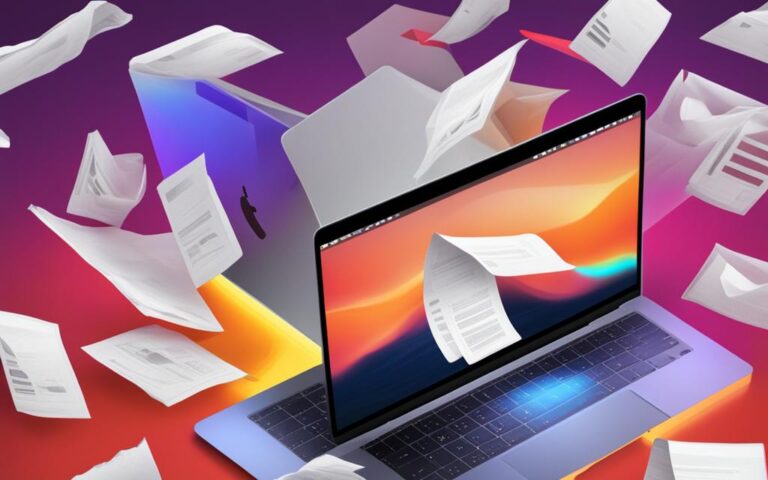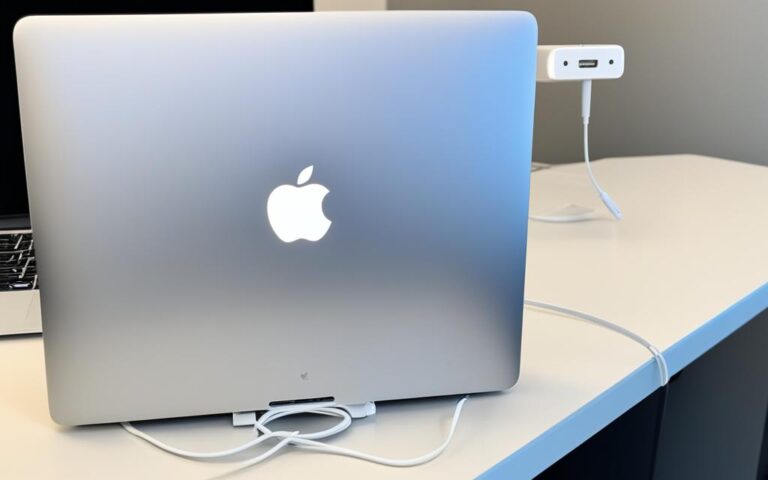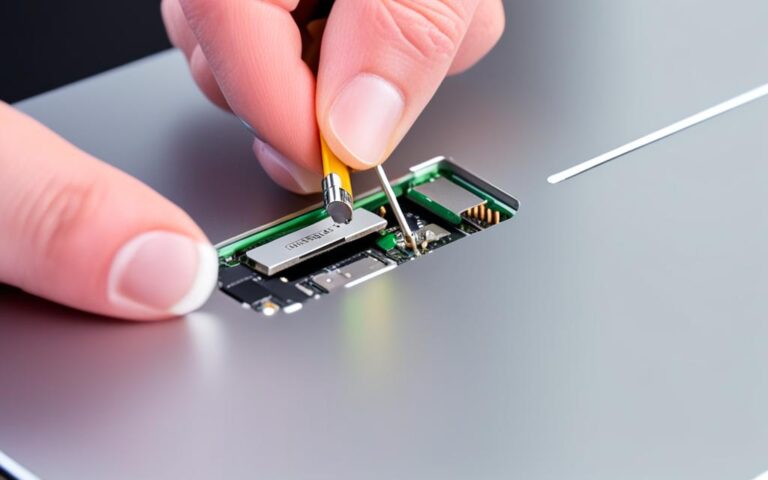Fixing MacBook Pro iCloud Sync Problems
Are you experiencing sync problems between your MacBook Pro and iCloud? You’re not alone. Many MacBook Pro users encounter issues with iCloud syncing, which can be highly frustrating. Whether it’s files not appearing in the correct iCloud Drive folder or missing files in the iCloud Drive tab, these problems can hinder your productivity.
Fortunately, there are several troubleshooting steps you can take to resolve these iCloud sync problems on your MacBook Pro. In this article, we’ll explore some effective solutions that can help you get your MacBook Pro and iCloud syncing smoothly again.
One of the first steps you can try is performing a fresh installation of MacOS. This can help eliminate any system glitches or conflicts that may be causing the sync issues. Additionally, deleting certain files related to iCloud sync can also be helpful. Signing out and back in to iCloud, creating a new user, and killing and restarting the “bird” process in Activity Monitor are other troubleshooting steps that can potentially resolve the sync problems.
Stay tuned for the next sections of this article, where we’ll delve deeper into troubleshooting tips and tricks specifically for iCloud sync issues on a MacBook Pro. By following these steps, you’ll be able to regain seamless syncing between your MacBook Pro and iCloud Drive.
Troubleshooting iCloud Sync on MacBook Pro
Having trouble with iCloud sync on your MacBook Pro? Don’t worry – we’ve got you covered. In this section, we’ll explore some troubleshooting steps you can take to resolve those frustrating sync issues.
Starting in Safe Mode
If you’re experiencing iCloud sync problems, try starting your MacBook Pro in safe mode. This can help identify and eliminate any software conflicts that may be hindering the sync process.
Checking iCloud Login on All Devices
Ensure that you are properly logged into iCloud on all your devices, including your MacBook Pro. Sometimes, an incorrect or expired iCloud login can disrupt the sync. Double-check your login details and make sure everything is up to date.
Verifying Date and Time Settings
Believe it or not, incorrect date and time settings can affect iCloud sync. Make sure your MacBook Pro is set to the correct date, time, and time zone. This simple step can often resolve syncing issues.
Force Syncing iCloud Contacts and Calendars
If certain contacts or calendar events are not syncing, try force syncing them on your MacBook Pro. Go to the Contacts or Calendars app, select the problematic item, and make a small edit. This edit will trigger a sync and hopefully resolve the issue.
Logging Out and Back into iCloud
Another troubleshooting step is to log out of your iCloud account on your MacBook Pro and then log back in. This process can refresh the connection and resolve any sync issues that may be occurring.
Restarting and Hard Resetting
If all else fails, try restarting your MacBook Pro. Sometimes, a simple restart can clear temporary glitches and restore the iCloud sync functionality. If the issue persists, you can also perform a hard reset by holding down the power button until the device turns off and then turning it back on.
“Troubleshooting iCloud sync on your MacBook Pro doesn’t have to be complicated. By following these steps, you can overcome the most common sync issues and keep your files and data seamlessly updated across all your devices.”
– Apple Support
Troubleshooting iCloud Sync on MacBook Pro Summary
These troubleshooting steps should help you resolve iCloud sync problems on your MacBook Pro. Starting in safe mode, checking iCloud login details, verifying date and time settings, force syncing contacts and calendars, and logging out and back into iCloud can often get things back on track. Lastly, restarting your device or performing a hard reset may be necessary in more stubborn cases.
| Troubleshooting Steps | Effectiveness |
|---|---|
| Starting in Safe Mode | ✅✅✅ |
| Checking iCloud Login on All Devices | ✅✅✅✅ |
| Verifying Date and Time Settings | ✅✅ |
| Force Syncing iCloud Contacts and Calendars | ✅✅✅ |
| Logging Out and Back into iCloud | ✅✅ |
| Restarting and Hard Resetting | ✅✅✅✅ |
Tips to Resolve iCloud Drive Syncing Issues on Mac
Resolving iCloud Drive syncing issues on a Mac can be a frustrating experience. However, there are several tips and tricks that can help users fix these syncing problems and ensure smooth file management. Here are some recommended steps:
- Ensure iCloud Account Login: First and foremost, check that your iCloud account is properly logged in on all devices. This ensures that syncing can occur seamlessly across your Mac and other Apple devices.
- Restart Your Mac: Sometimes, a simple restart can resolve syncing issues. Restart your Mac and see if the problem persists.
- Check Date and Time Settings: Incorrect date and time settings can disrupt iCloud syncing. Make sure your Mac is set to the correct date, time, and time zone.
- Organize Storage Space: Insufficient storage space on your Mac can hinder iCloud syncing. Declutter your device by deleting unnecessary files and organizing your storage to free up space.
- Update to the Latest macOS: Outdated software can cause compatibility issues with iCloud Drive. Ensure that your Mac is running the latest version of macOS to access the most up-to-date features and bug fixes.
By following these steps, you can tackle common iCloud Drive syncing issues on your Mac effectively. Remember, maintaining a stable internet connection is also vital for seamless syncing. If problems persist, consider consulting Apple support for further assistance.
Common Questions Related to iCloud Drive Syncing on MacBook
Users may have various questions related to iCloud Drive syncing on their MacBook. When encountering issues with iCloud Drive not loading, syncing the Mac Desktop with iCloud, or transferring files from Google Drive to iCloud, the following troubleshooting steps can help resolve these concerns:
-
Check the internet connection: A stable and reliable internet connection is crucial for proper iCloud Drive syncing. Users should ensure that their MacBook is connected to a strong and secure network.
-
Restart or change the network: If the internet connection is causing issues, restarting or changing the network may help establish a better connection and resolve syncing problems.
-
Follow specific steps for syncing between cloud storage services: Transferring files from Google Drive to iCloud requires following specific instructions provided by Apple. Users should carefully follow these steps to ensure a successful transfer.
By addressing these common questions and following the recommended troubleshooting steps, users can overcome iCloud Drive syncing issues on their MacBook, ensuring smooth and efficient synchronization of files and data.
Example Quote:
“Having trouble syncing your MacBook with iCloud Drive? Make sure to check your internet connection and follow the step-by-step instructions for transferring files between different cloud storage services. These simple steps can help resolve syncing issues and ensure a seamless experience.” – Apple Support
iCloud Drive Syncing Troubleshooting Steps
| Issue | Troubleshooting Steps |
|---|---|
| iCloud Drive not loading | 1. Check internet connection 2. Restart or change the network |
| Syncing Mac Desktop with iCloud | 1. Ensure proper iCloud settings 2. Restart MacBook 3. Force sync Mac Desktop |
| Transferring files from Google Drive to iCloud | 1. Follow Apple’s instructions for transferring files 2. Ensure both accounts are properly connected and authorized |
Conclusion
In conclusion, iCloud syncing issues on a MacBook Pro can be frustrating but can be resolved through various troubleshooting steps. By following the tips and tricks mentioned in this article, users can ensure smooth and uninterrupted syncing between their MacBook Pro and iCloud Drive.
It is important to keep your software up-to-date to avoid compatibility issues and ensure the latest bug fixes are in place. Regularly checking your iCloud account settings, such as enabling iCloud Drive and selecting the desired folders for syncing, can also prevent syncing problems.
Furthermore, maintaining a stable internet connection is crucial for seamless syncing between your MacBook Pro and iCloud. Slow or unstable internet speeds can cause delays or failures in syncing. Consider connecting to a reliable Wi-Fi network or using an Ethernet cable for a more stable connection.
By taking these measures, MacBook Pro users can effectively manage and access their files and data across all Apple devices, enhancing productivity and convenience. Remember, troubleshooting iCloud syncing issues may require some trial and error, but with persistence and attention to detail, you can overcome these challenges and enjoy a streamlined syncing experience.












